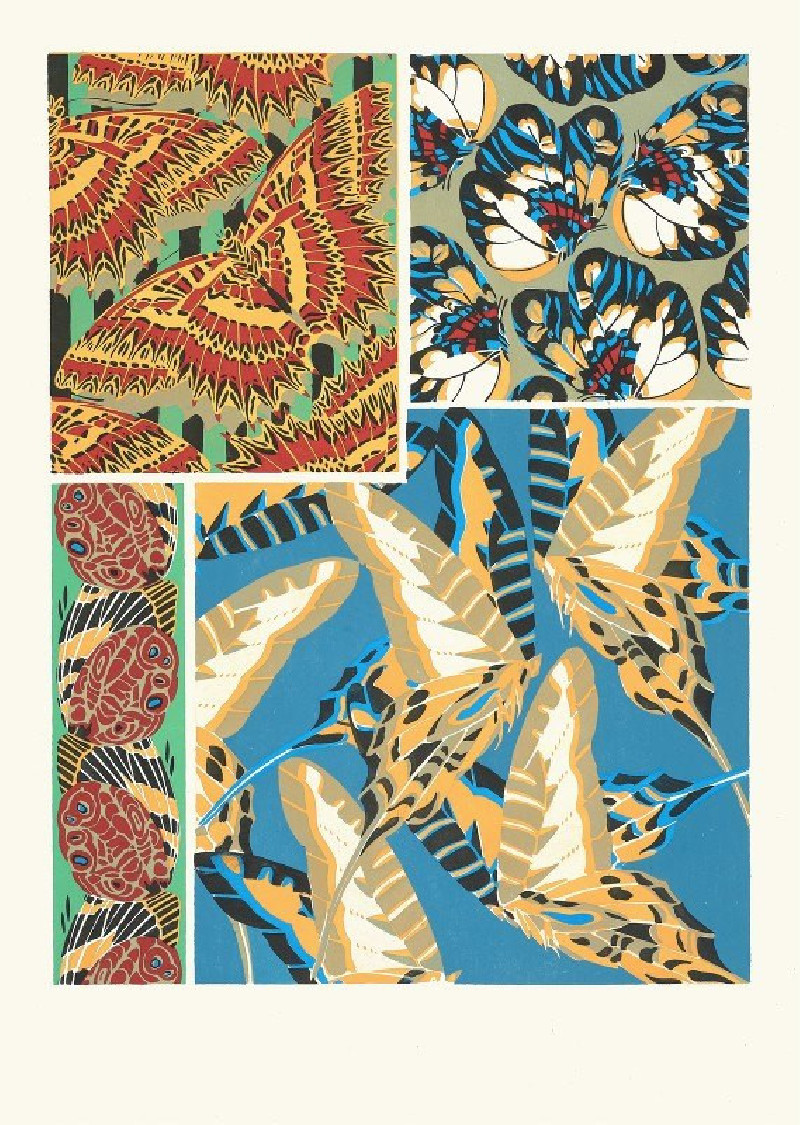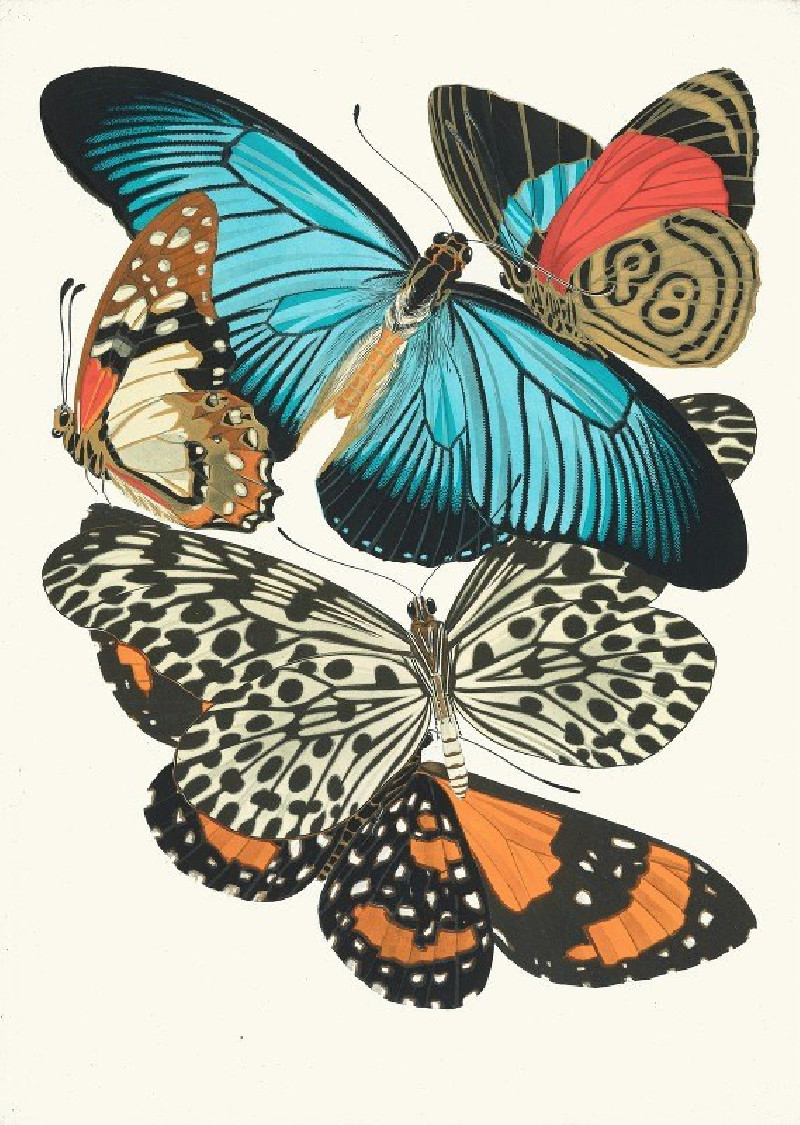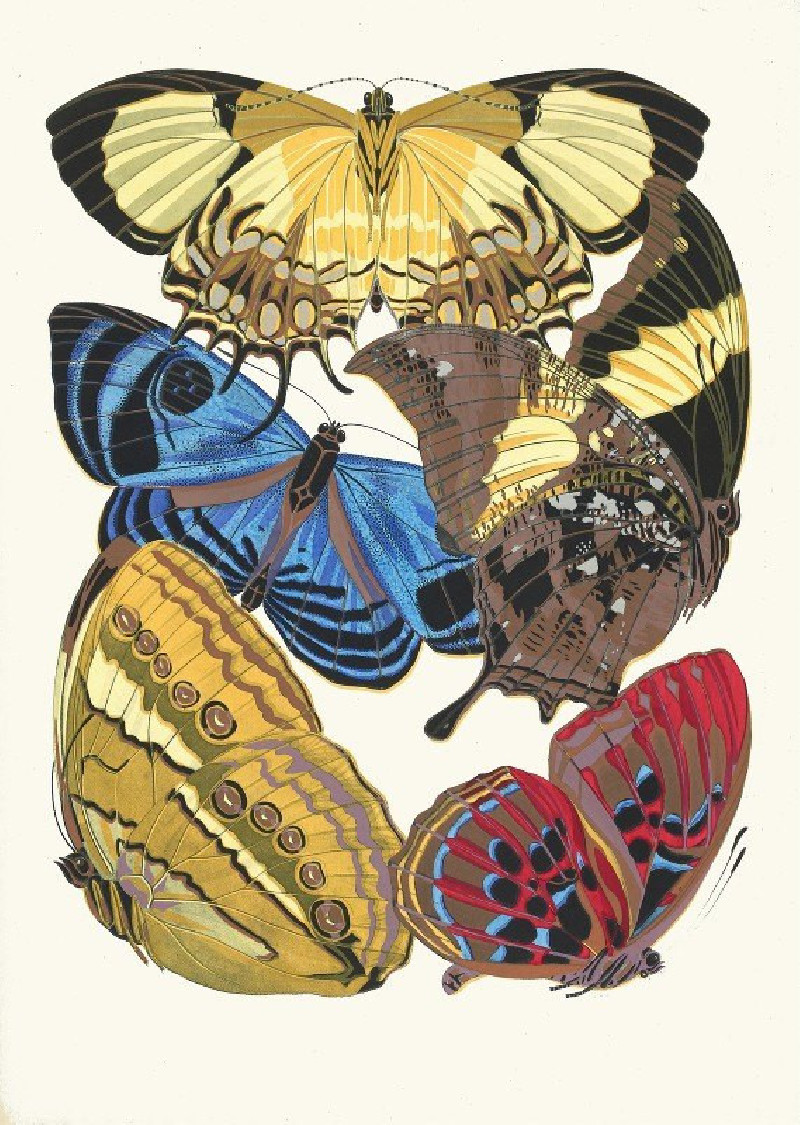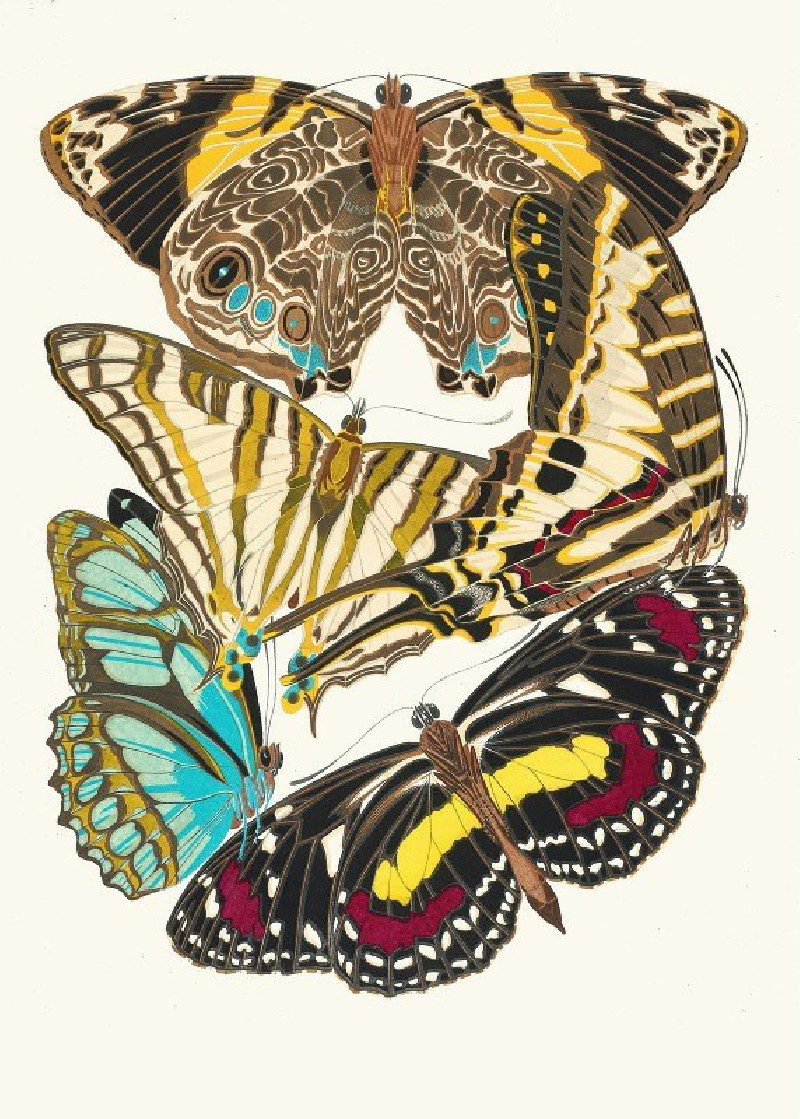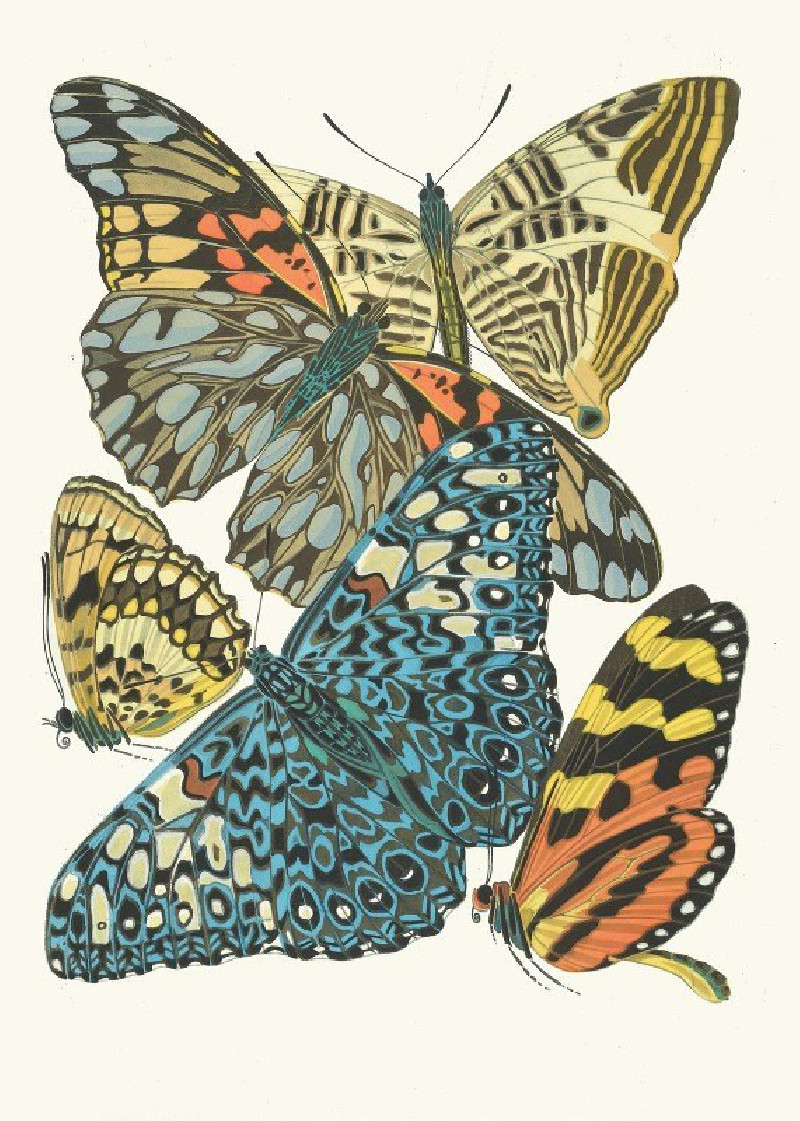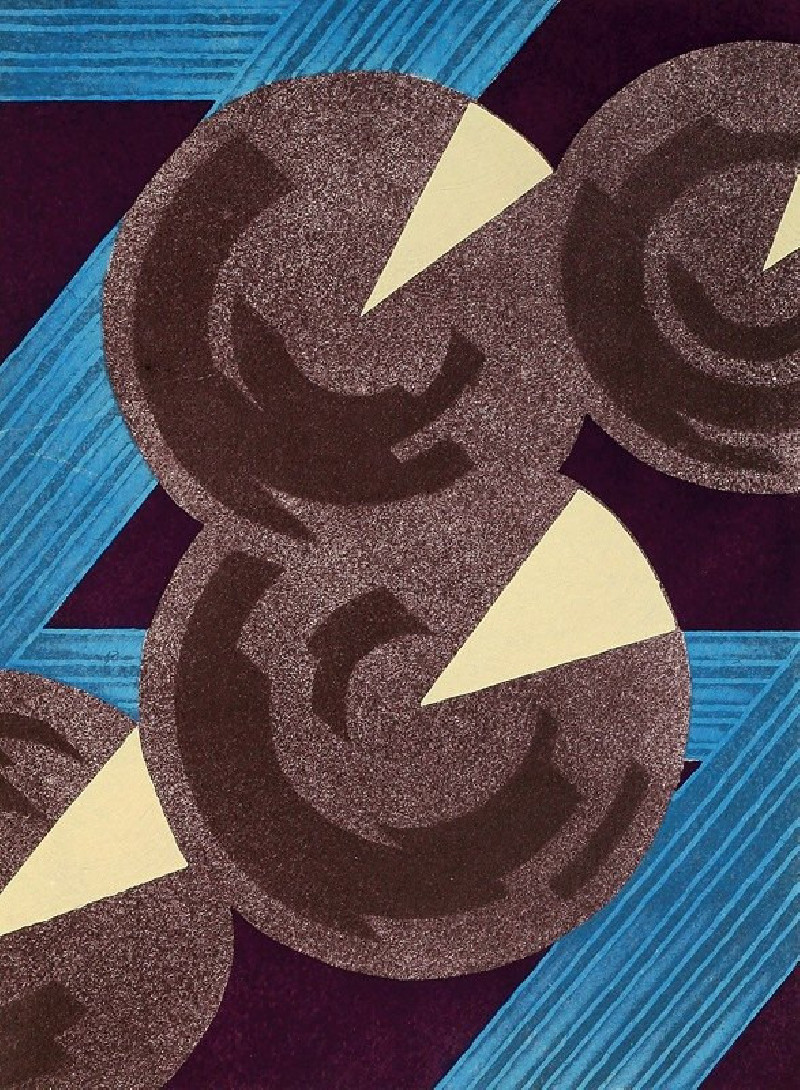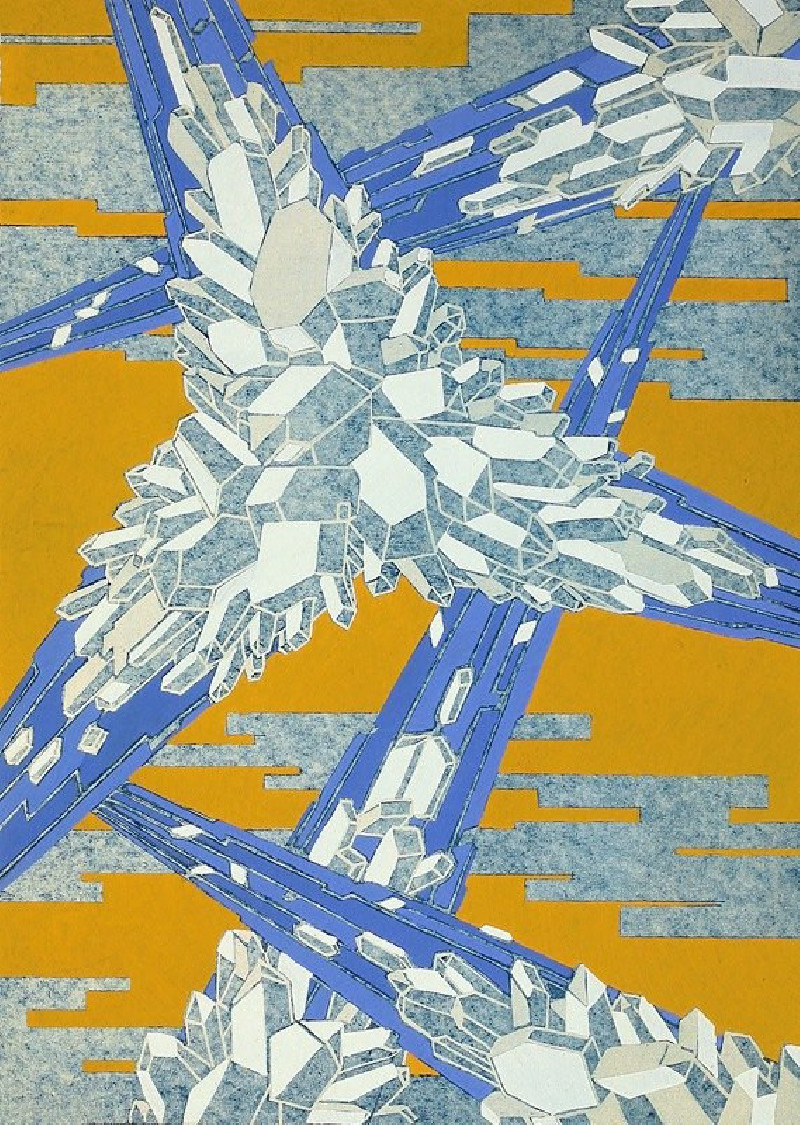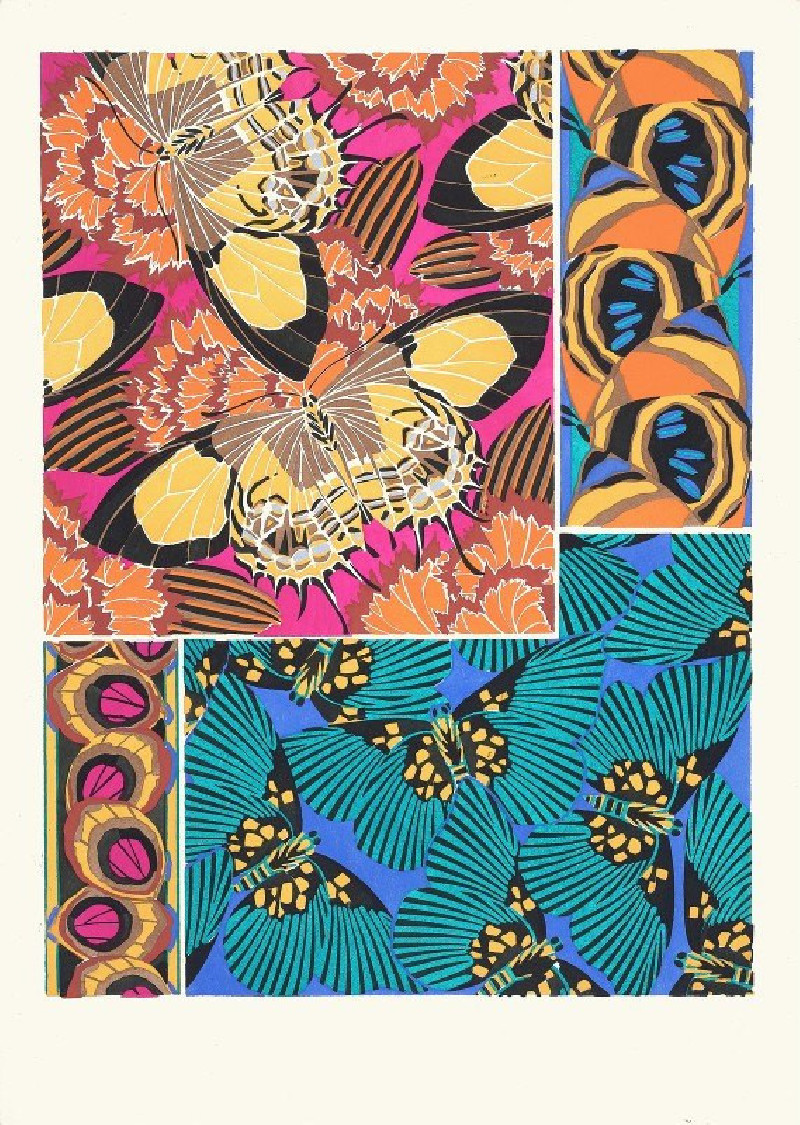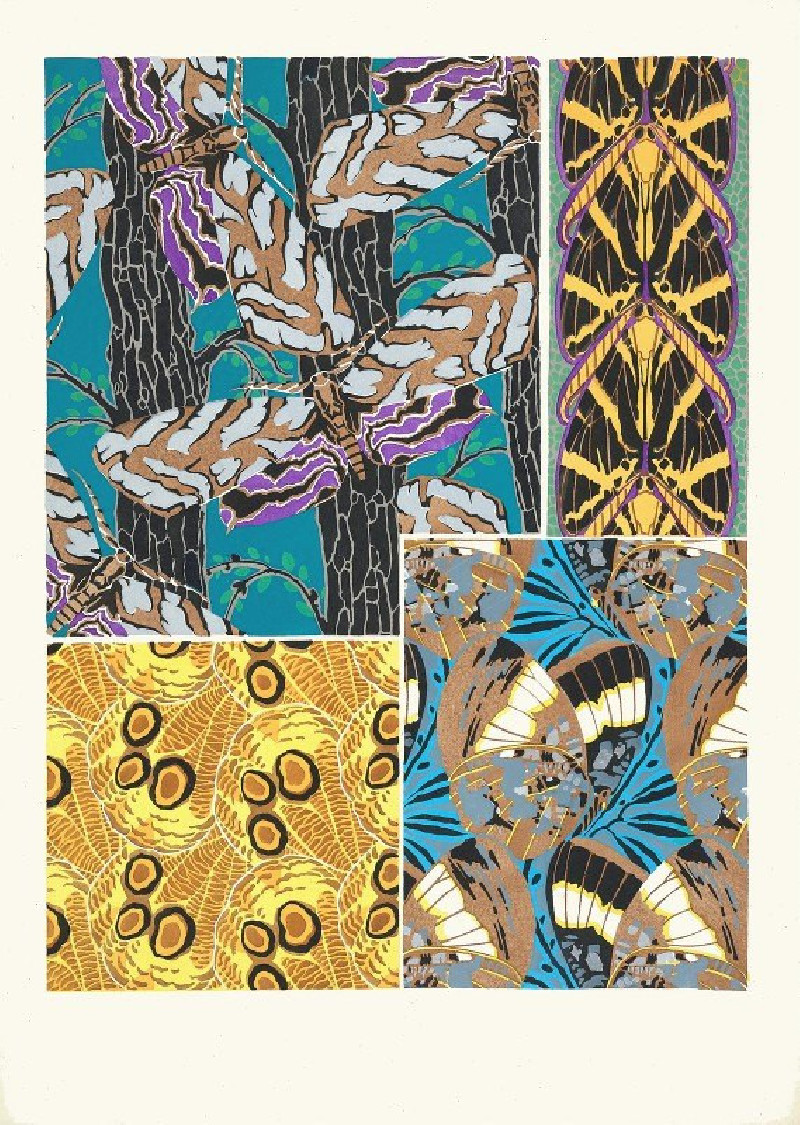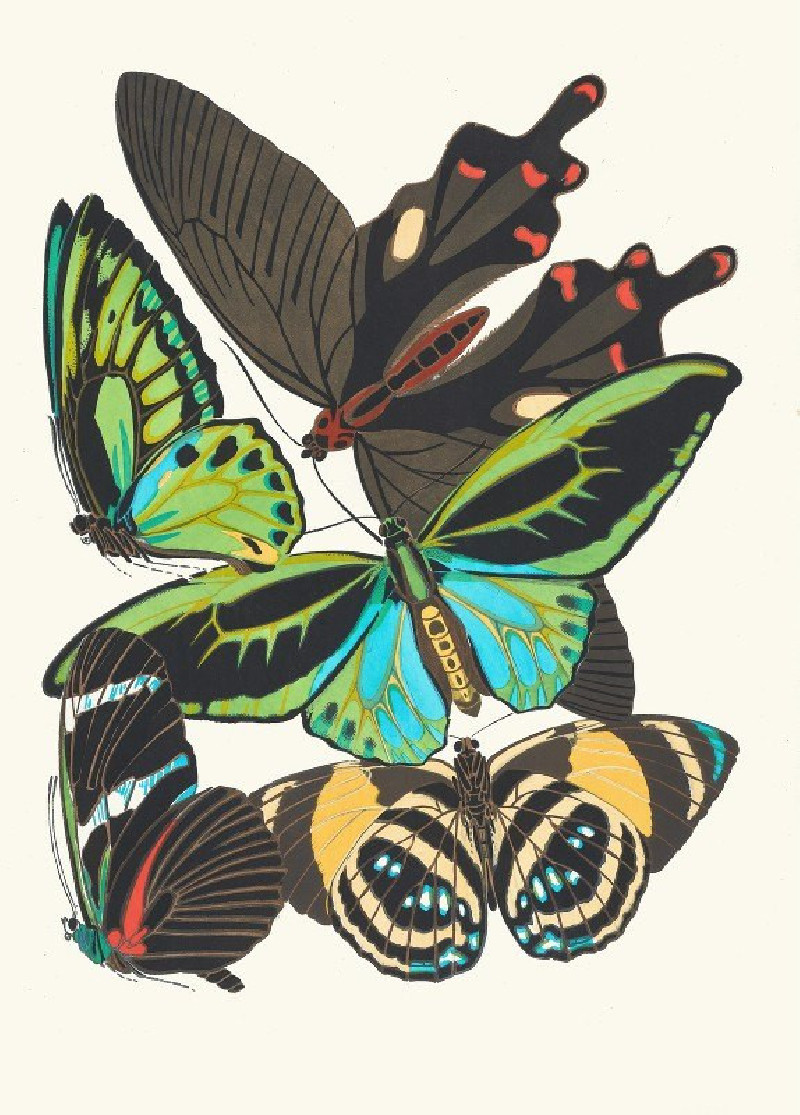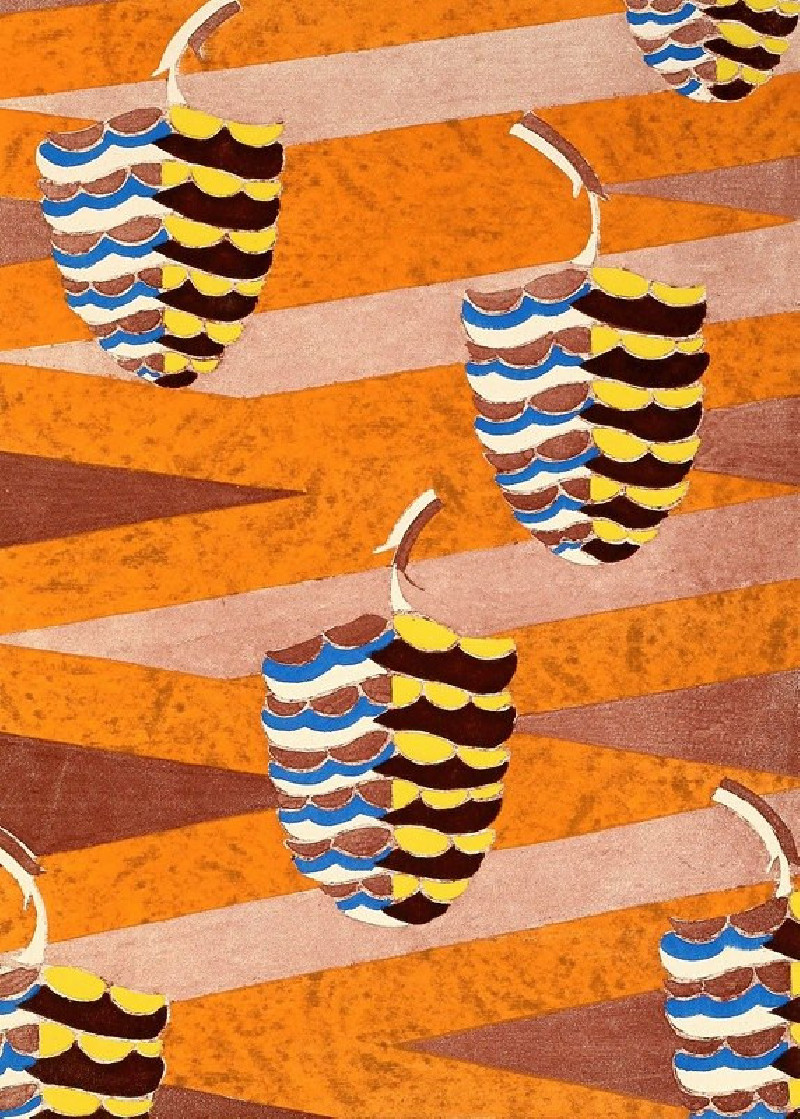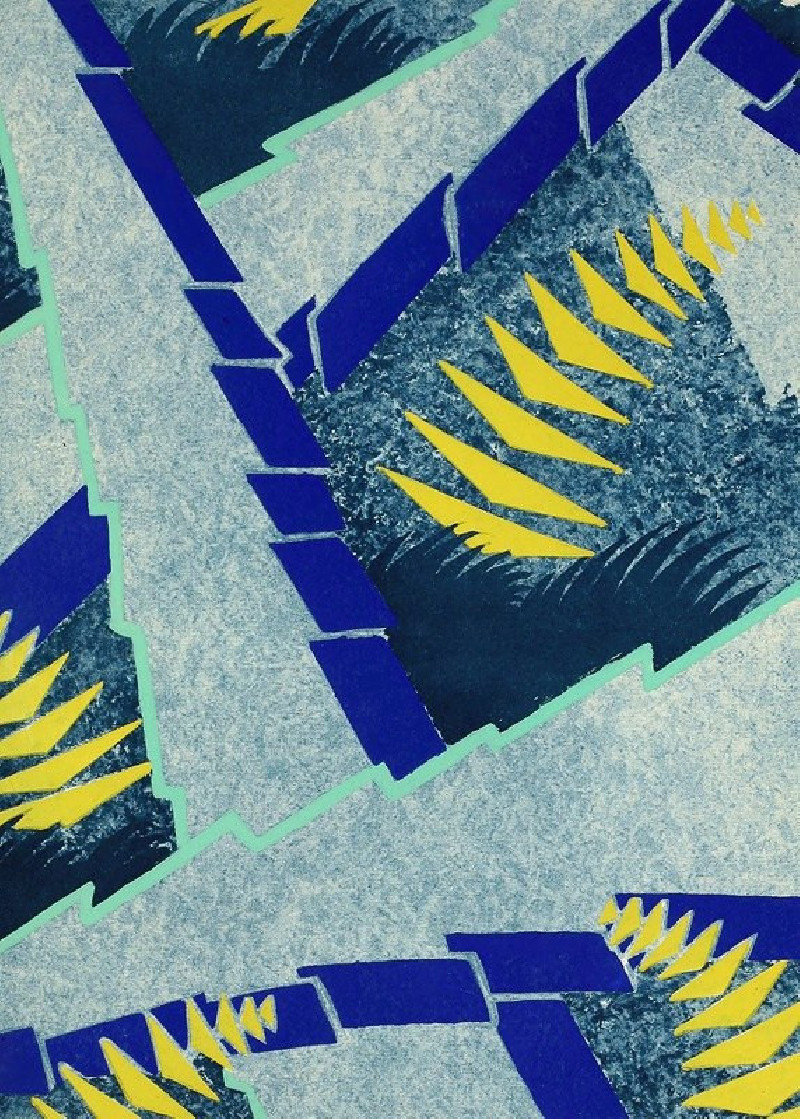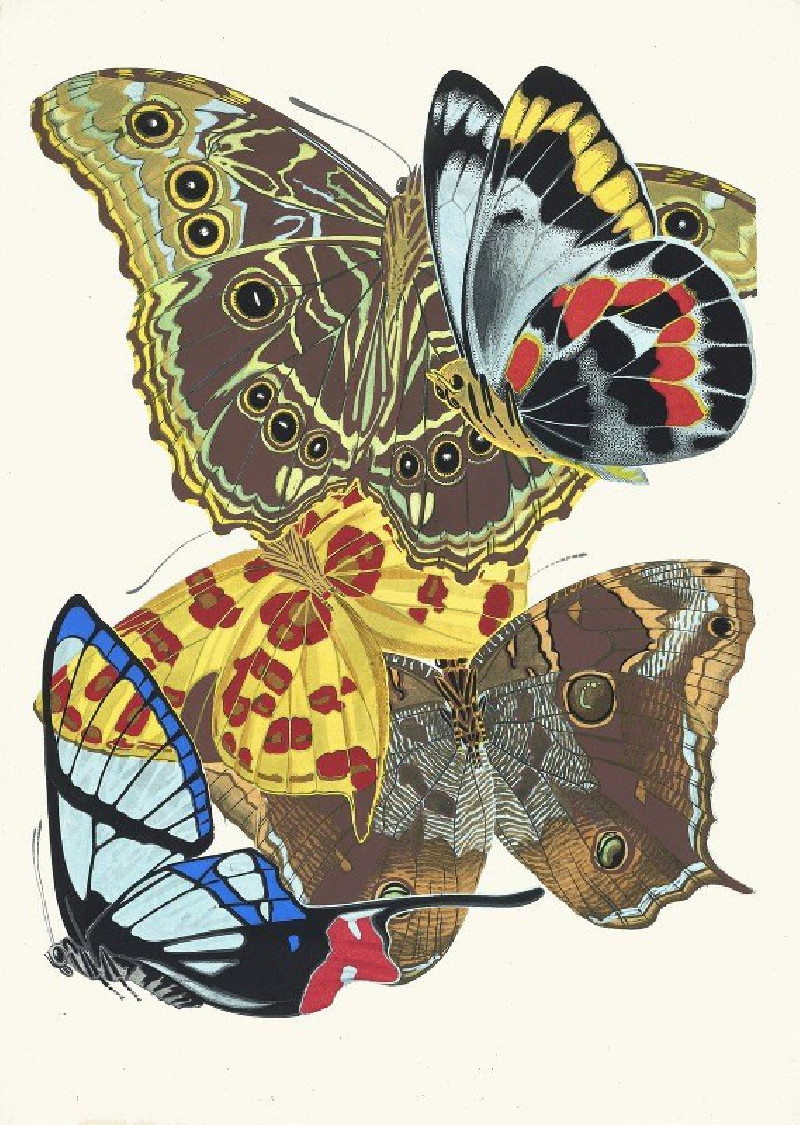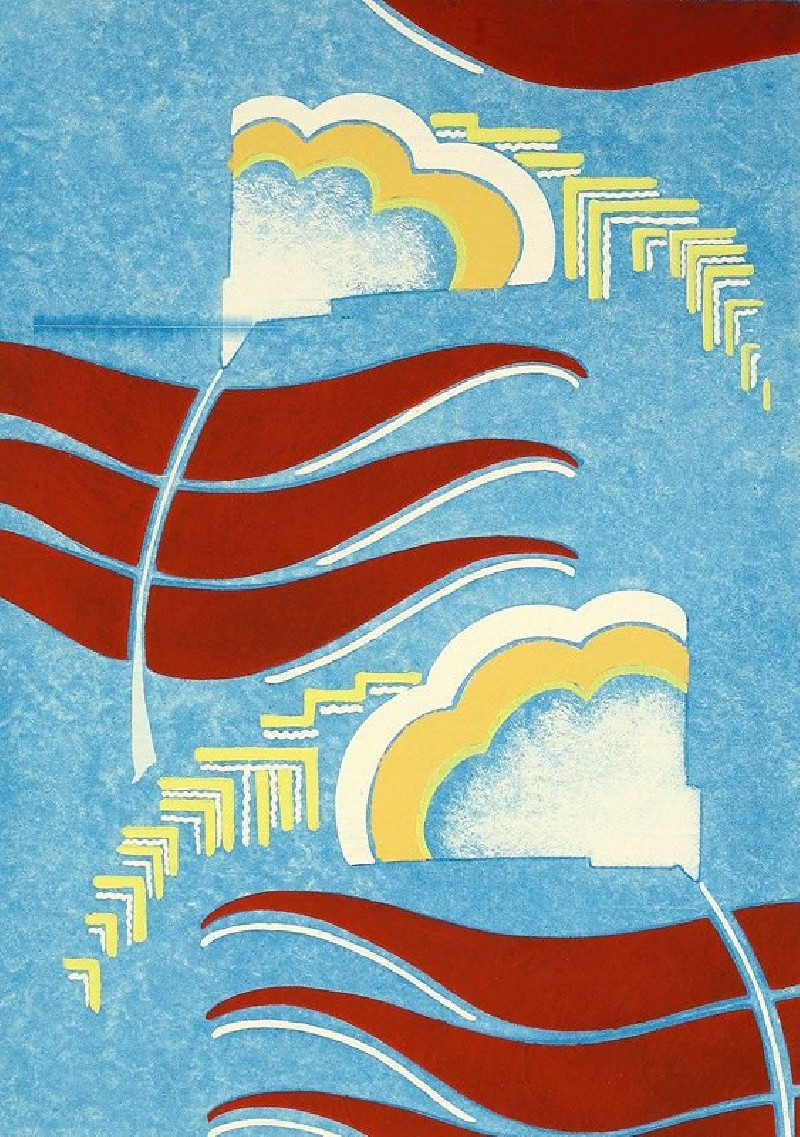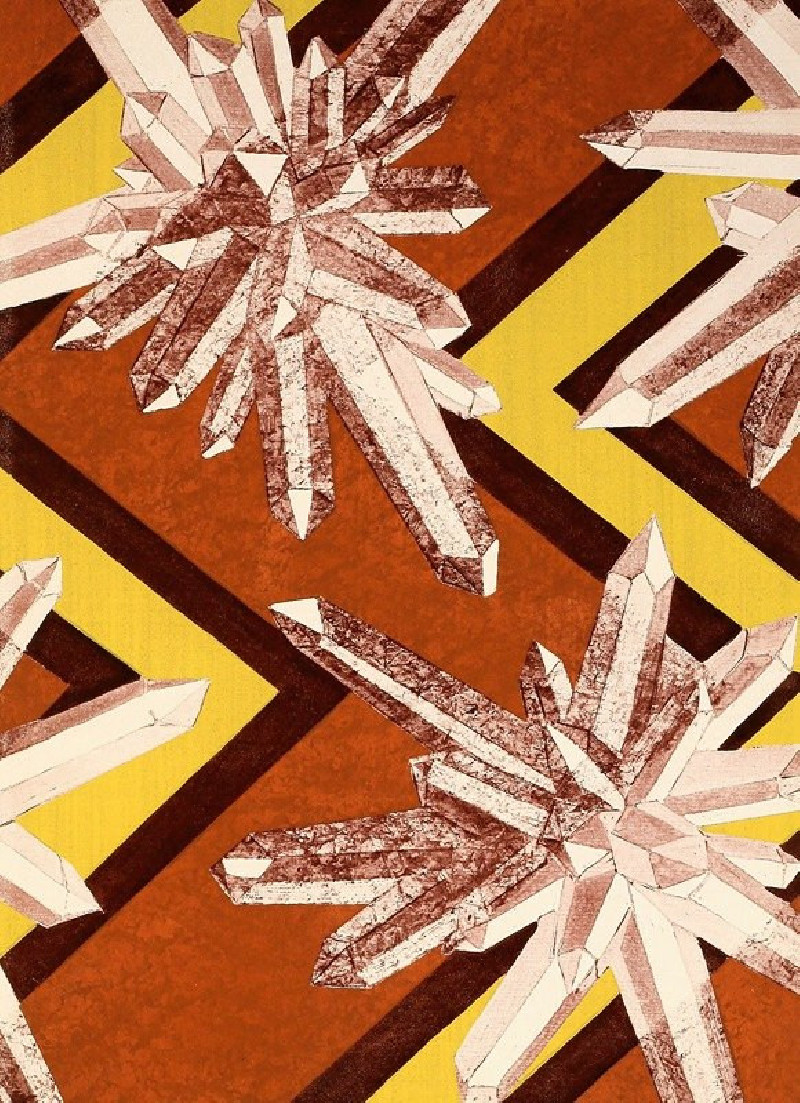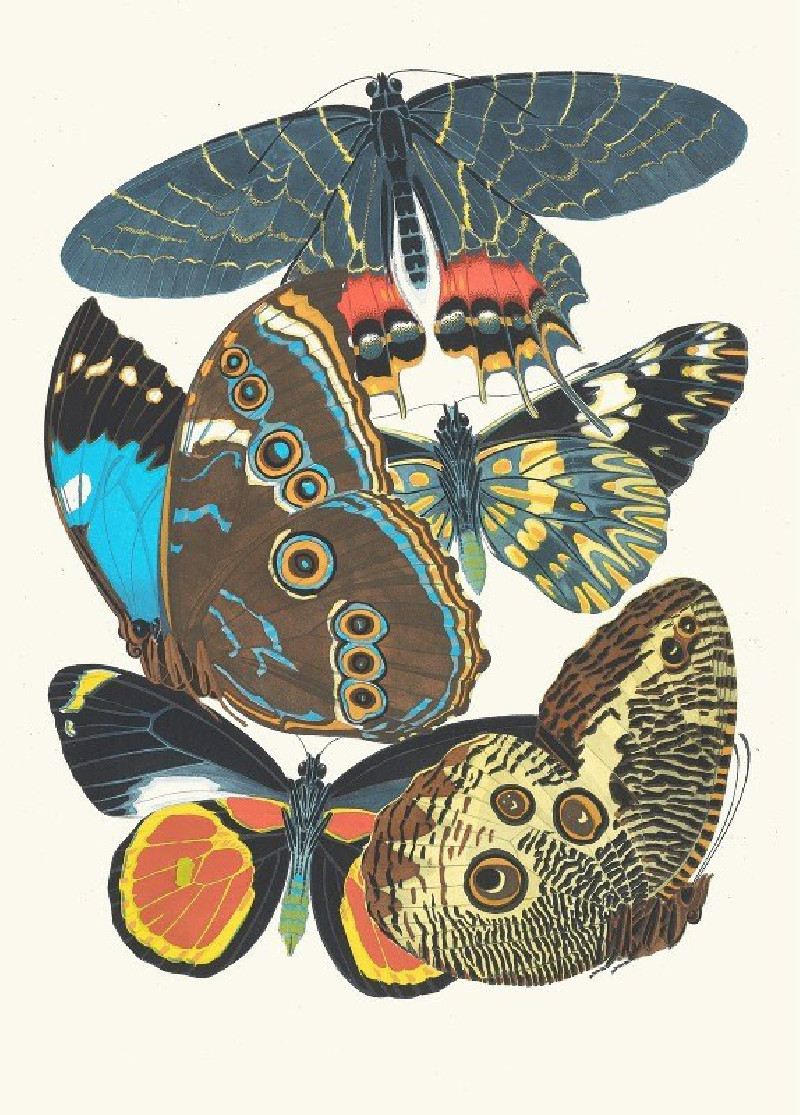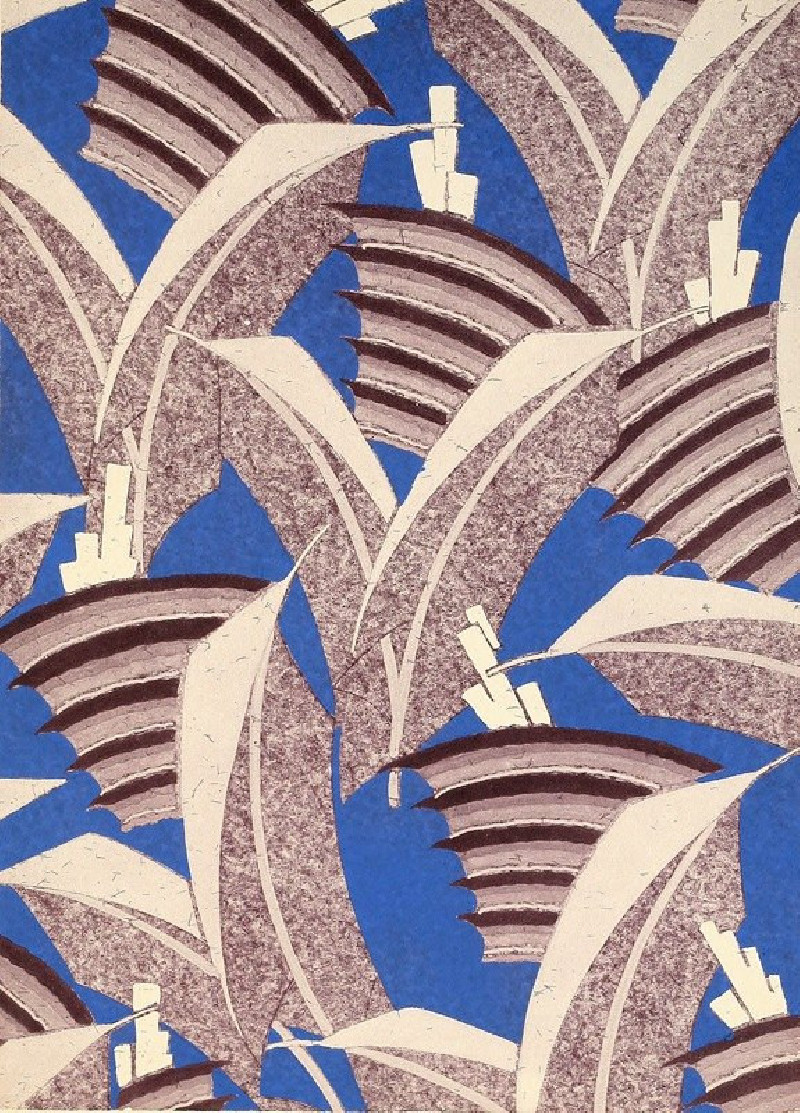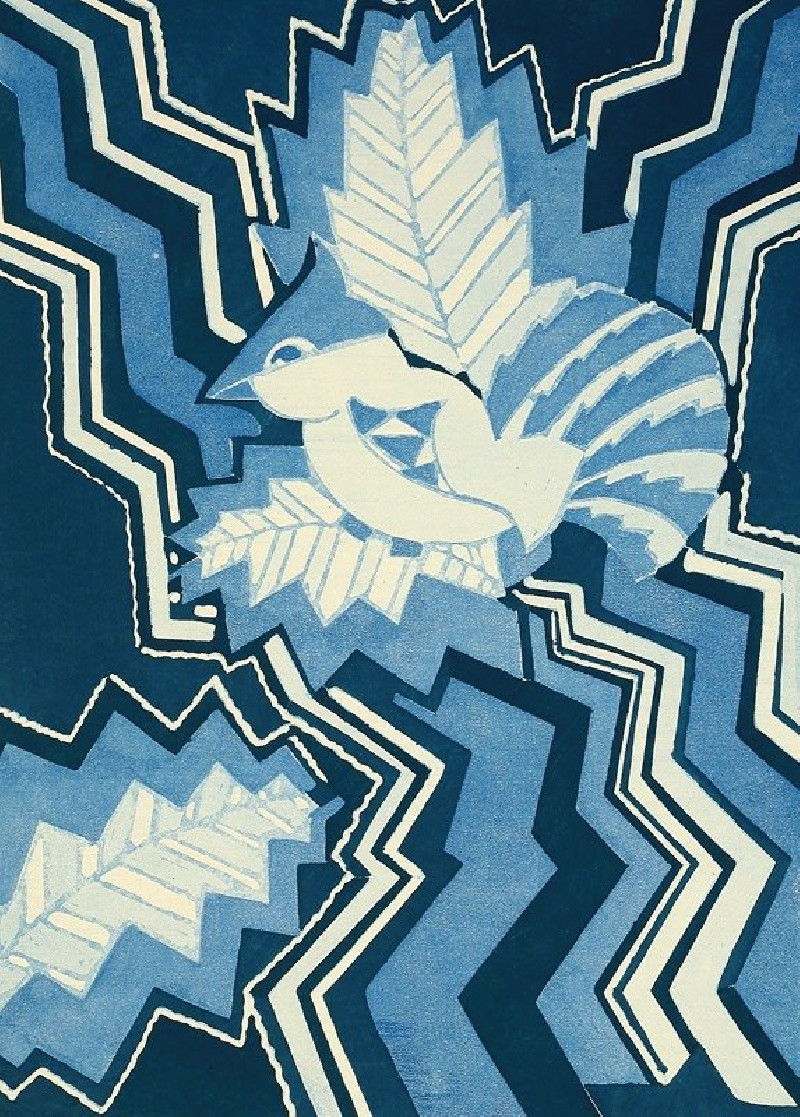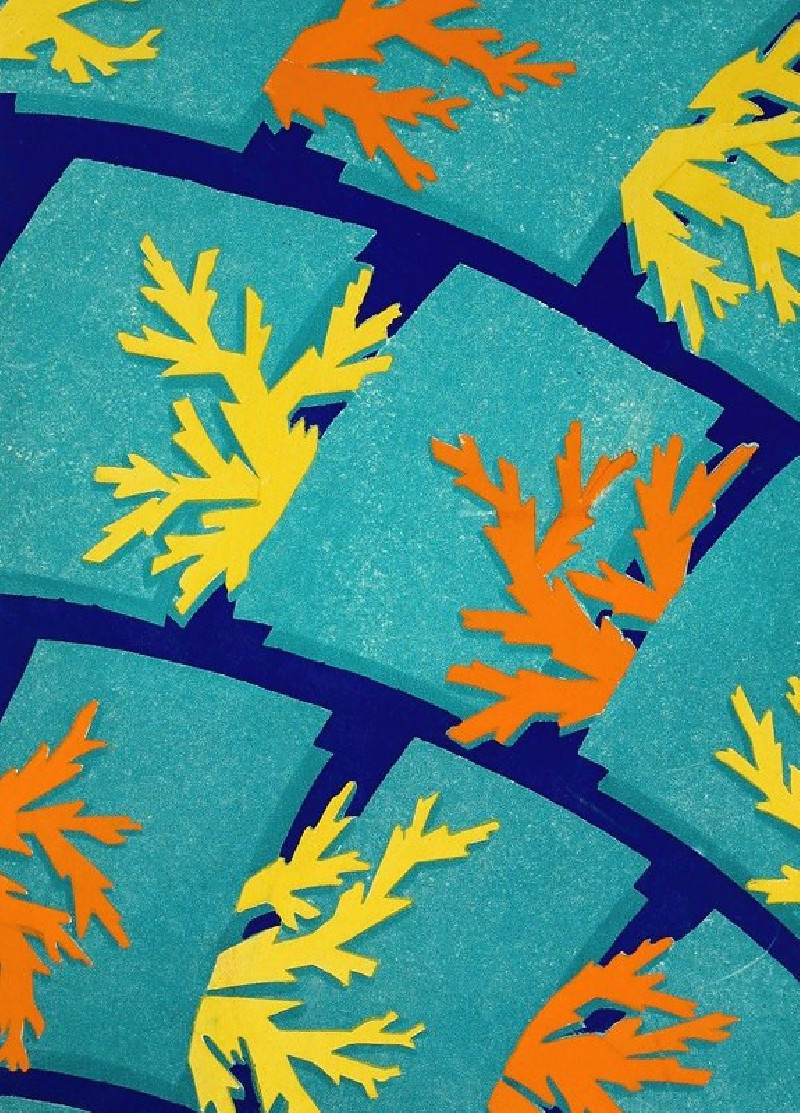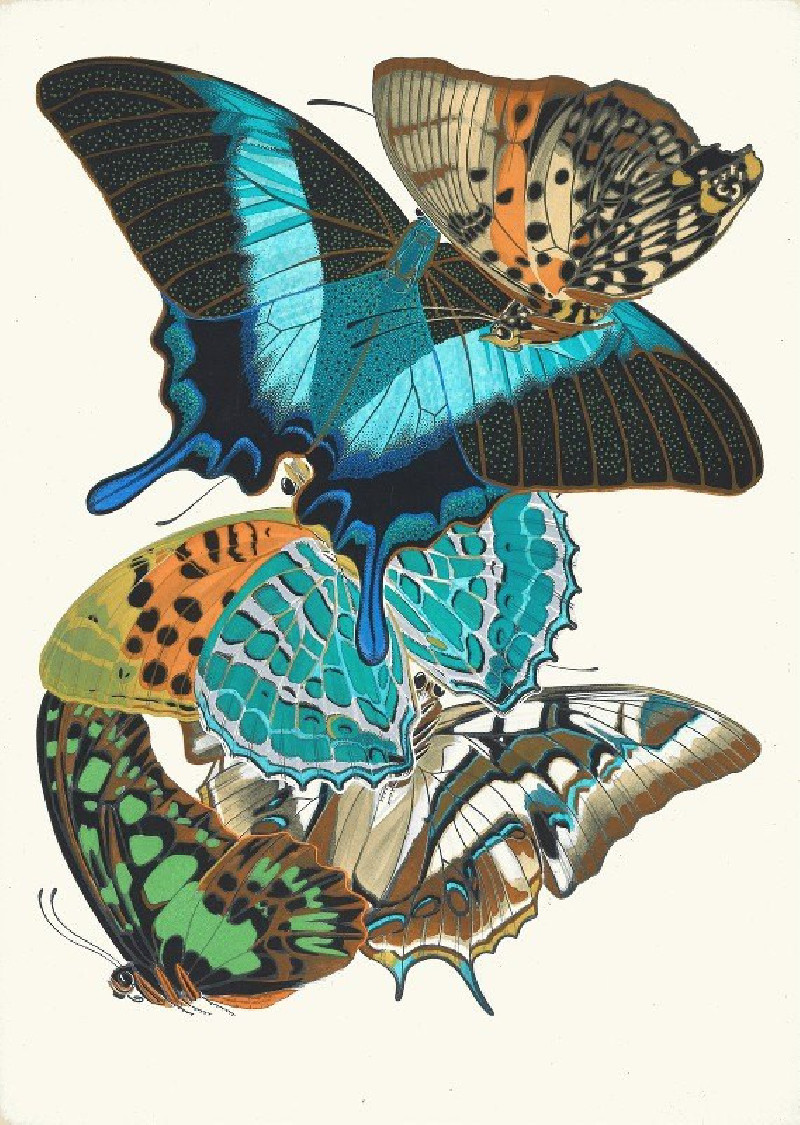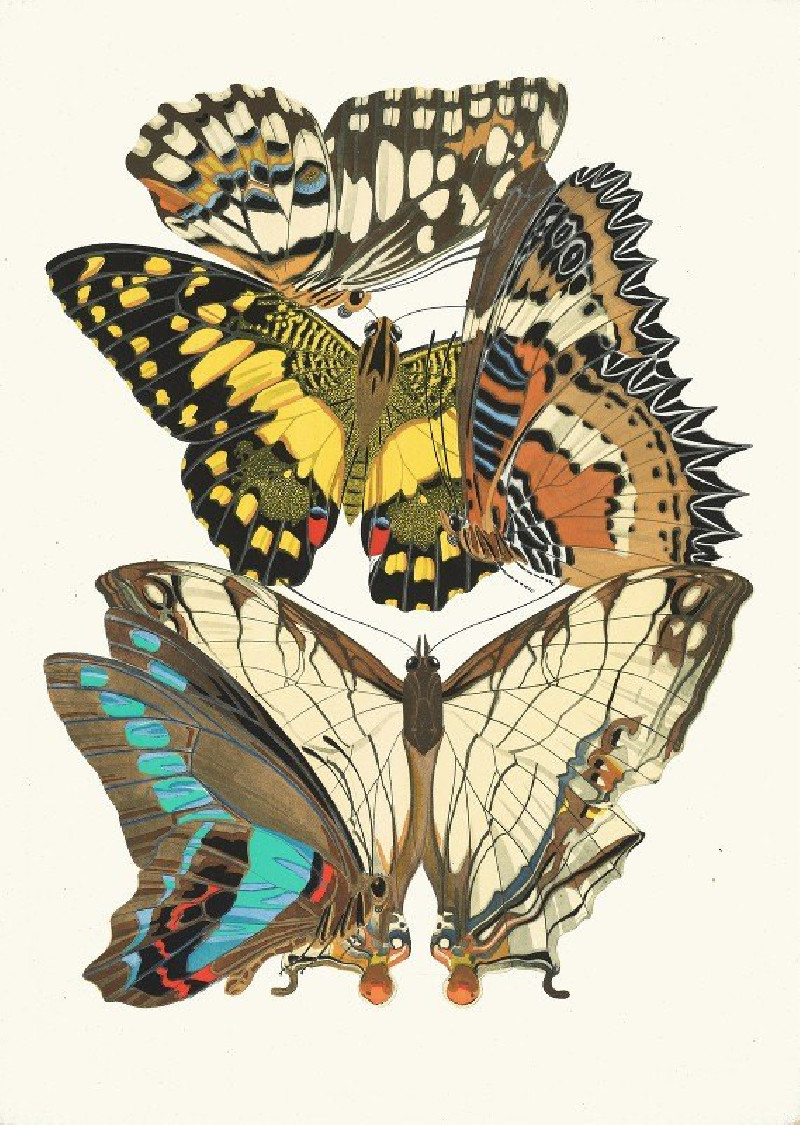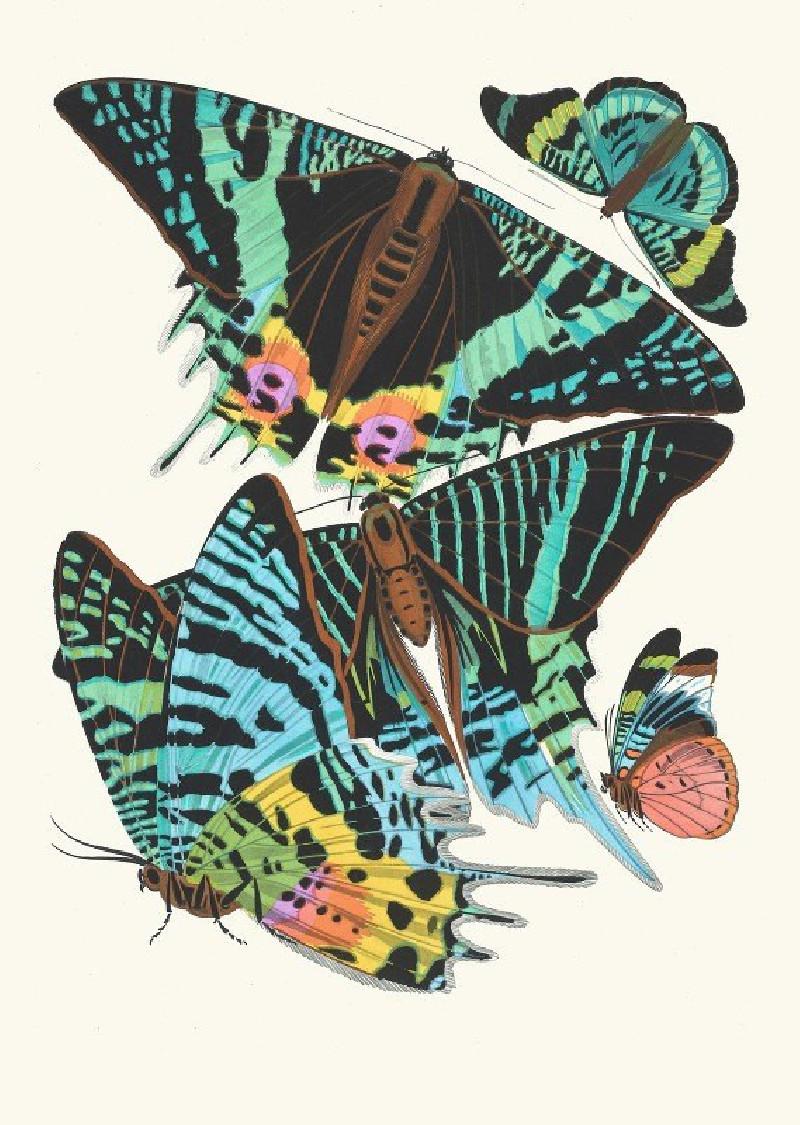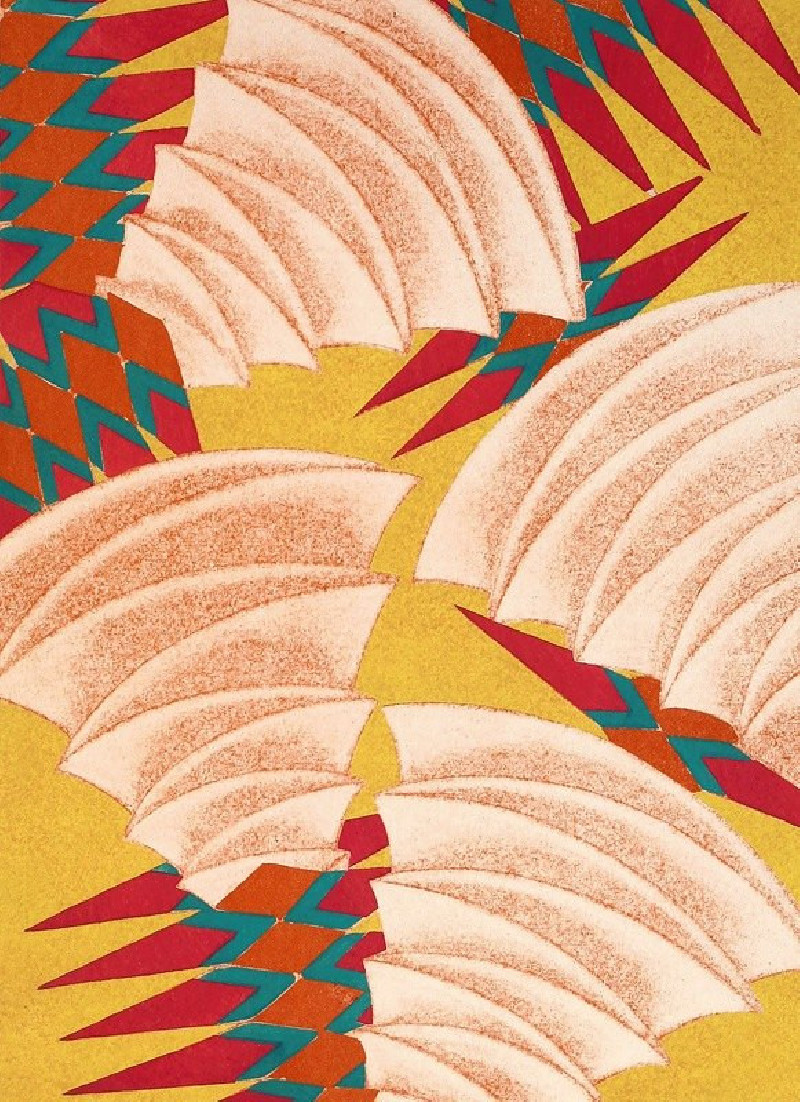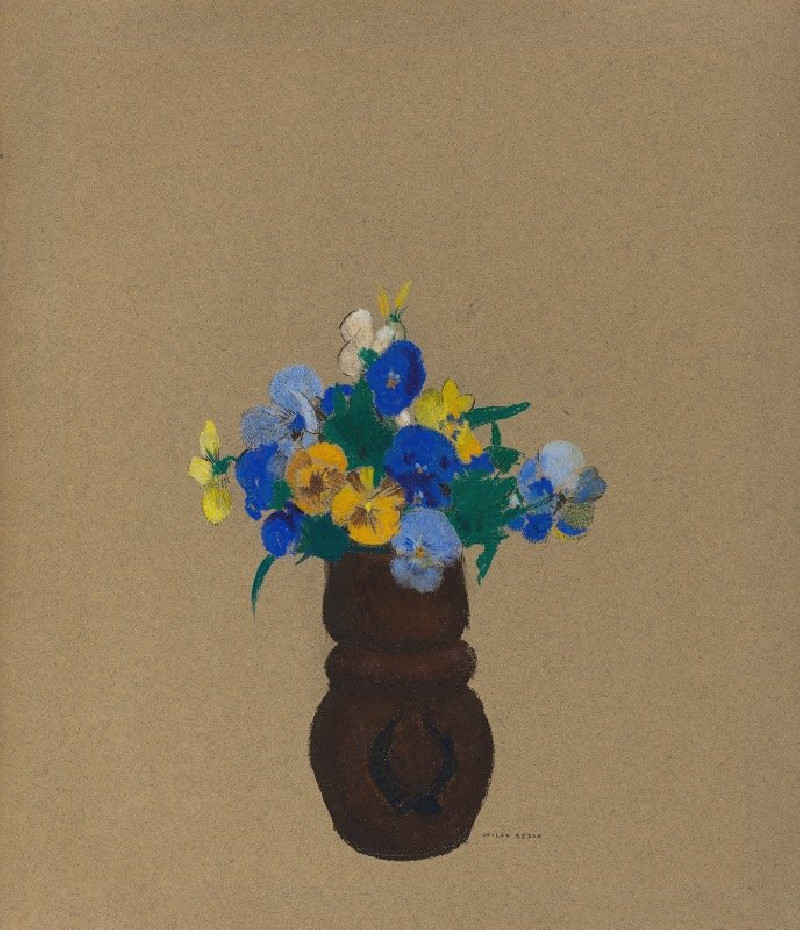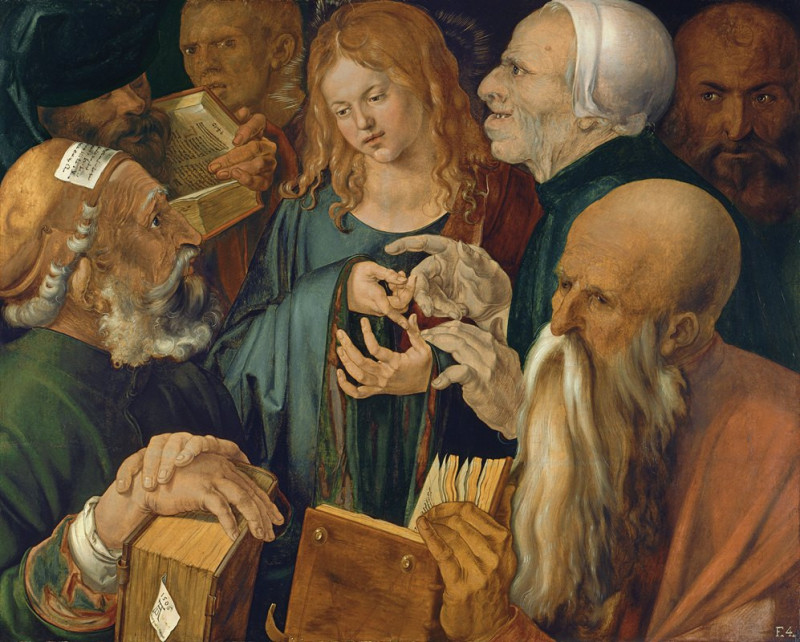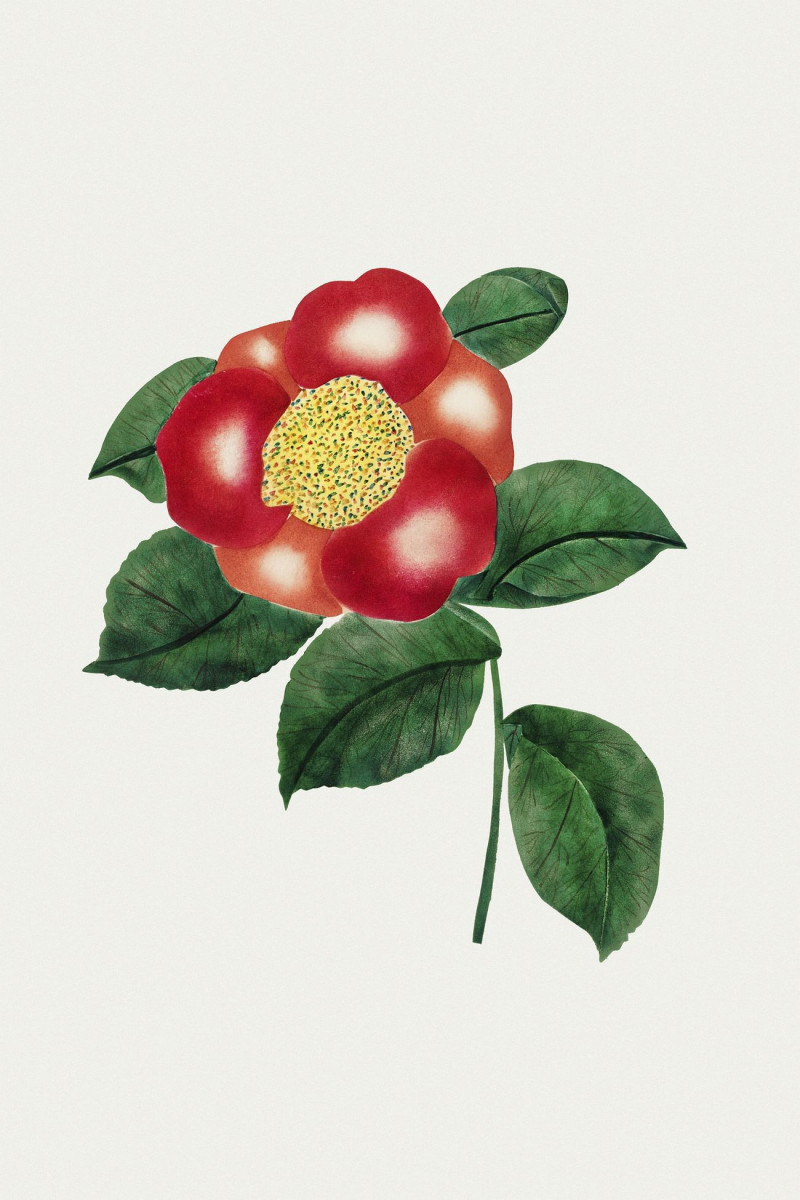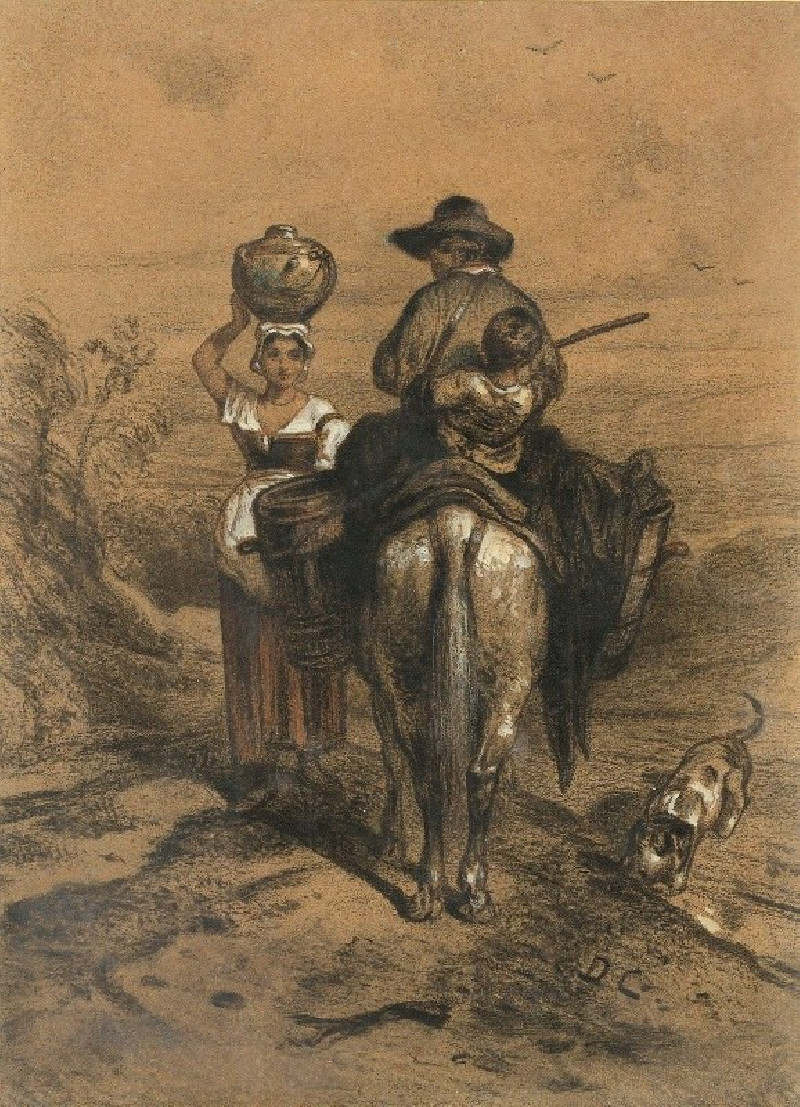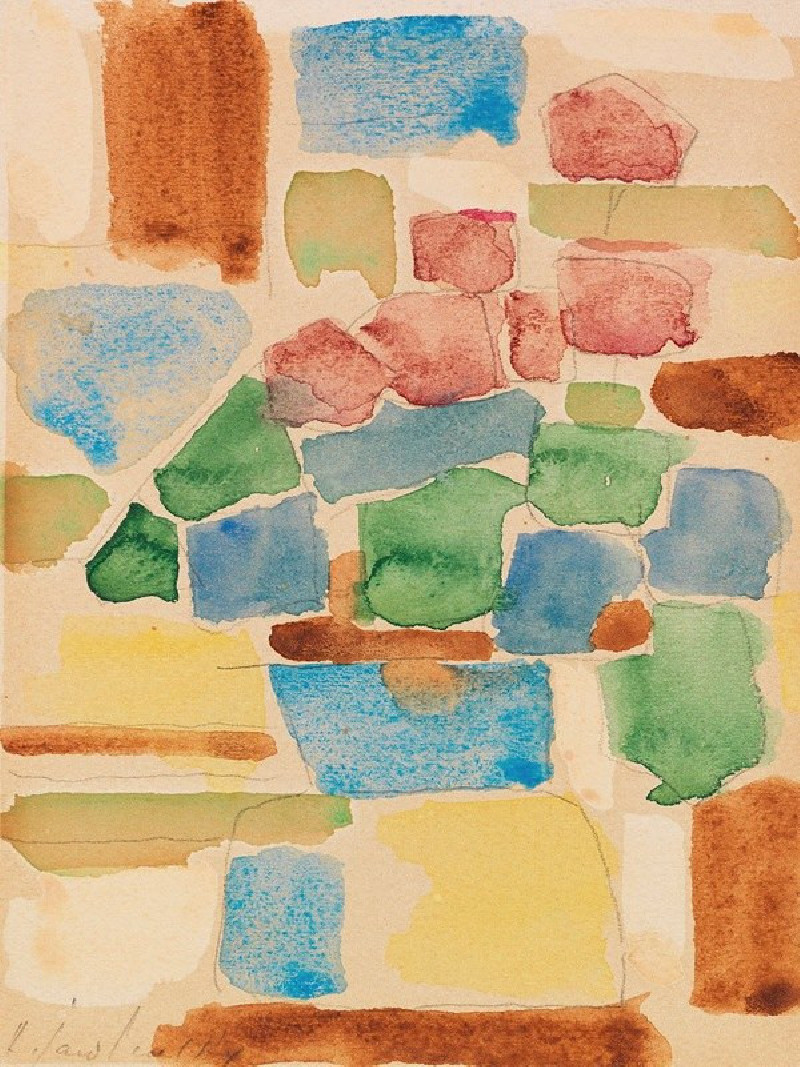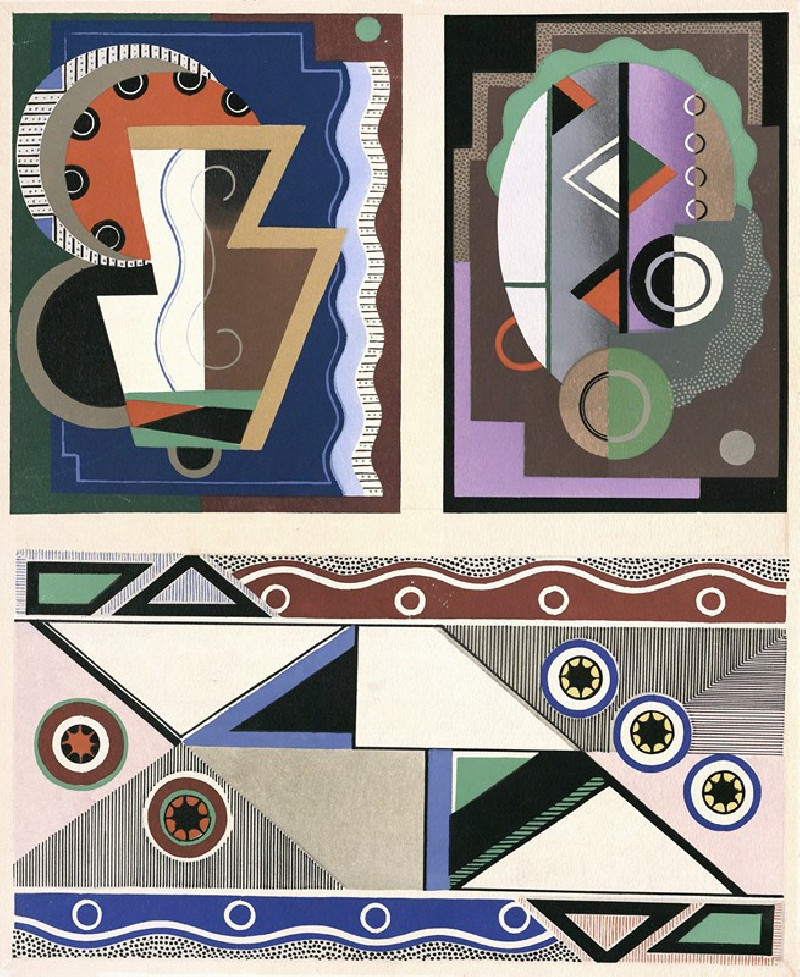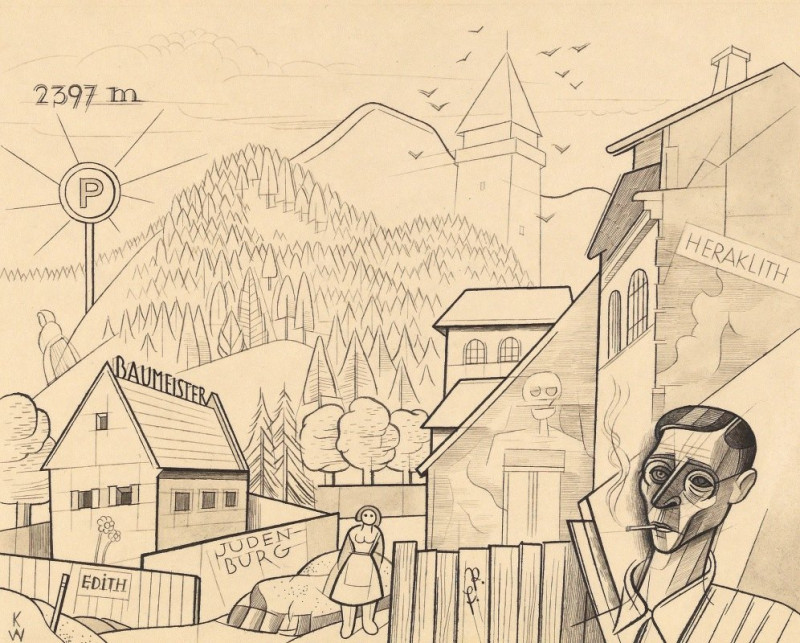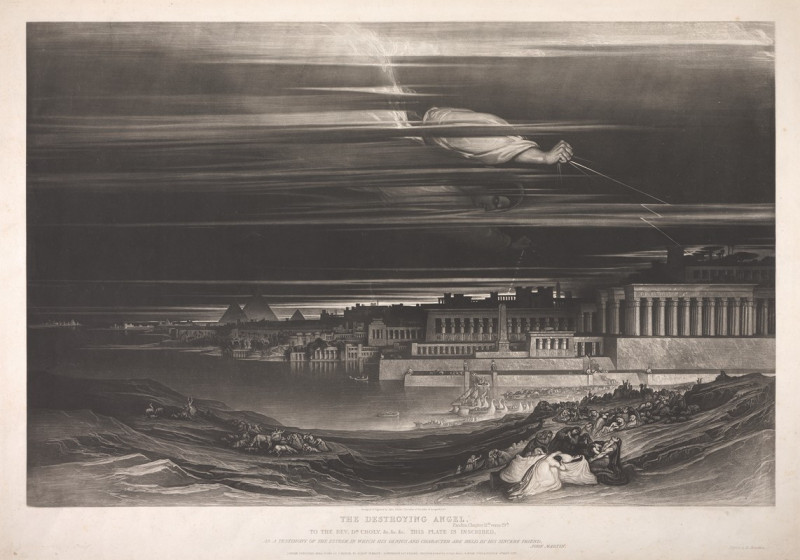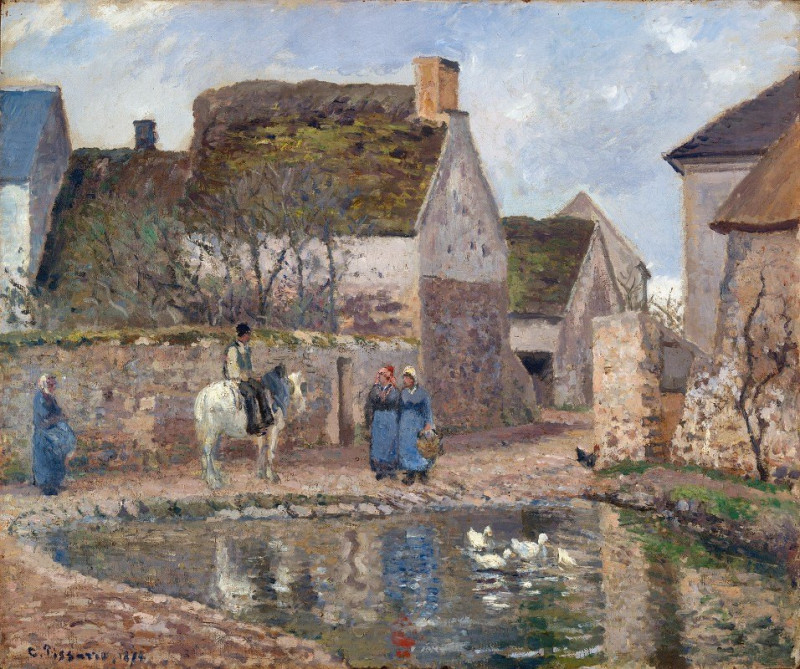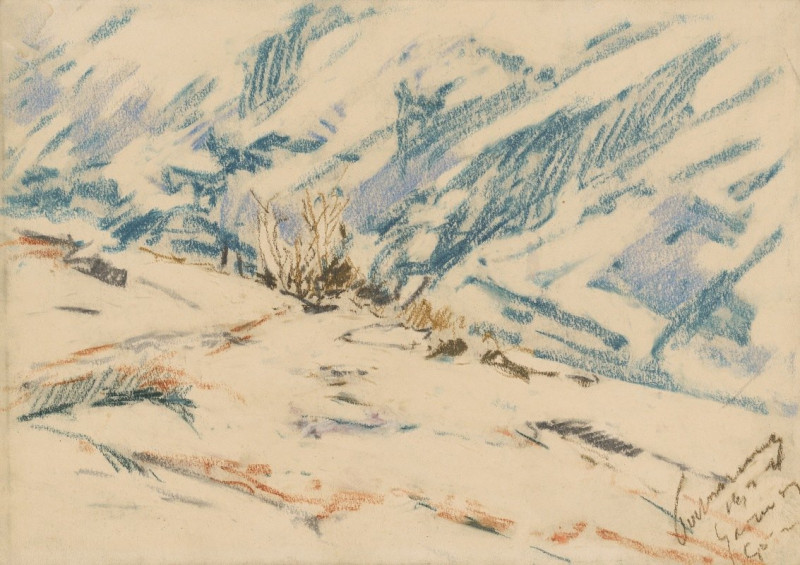Papillons, Pl. 19 (1925)
Technique: Giclée quality print
Recommended by our customers
More about this artwork
Delve into the captivating realm of *Papillons, Pl. 19*, a striking artwork created by the French artist Emile-Allain Séguy in 1925. This piece is a part of Séguy's larger series that highlights the beauty and intricate patterns of butterflies, merging artistic flair with scientific precision.The composition of *Papillons, Pl. 19* is segmented into four distinct blocks, each teeming with vibrant colors and detailed renderings of butterfly wings. The upper left corner features a dynamic tapestry of red and yellow with hints of dark green, creating an almost fiery effect with the butterfly patterns densely packed and layered. Adjacent to it, the upper right panel contrasts sharply with cooler hues of blue and white, punctuated by accents of black and red, giving it the appearance of delicate elegance and an airy spaciousness.Below, the left panel presents a smaller, more intimate collection of designs that combine deep maroons and verdant greens, evoking a sense of lush, natural settings where one might encounter these very creatures. On the bottom right, the largest panel uses a palette of earthy tones set against a bright blue background, reminiscent of the sky on a clear day, showcasing expansive, almost feather-like wings that convey a sense of graceful movement.Through *Papillons, Pl. 19*, Séguy not only celebrates the aesthetic magnificence of butterflies but also employs a sophisticated technique that blends the art of printmaking with the precision of entomological illustration.
Delivery
Returns
Emile-Allain Séguy was a popular French designer throughout the Art Deco and Art Nouveau movements of the 1920s. Often confused with the French entomologist Eugene Séguy who was active during the same time period, E.A. Séguy designed primarily patterns and textiles and was heavily influenced by the natural world. He was particularly fond of the intricate patterns and beauty of insects (Eugene would have approved), which he saw as “mechanic wonders” that provided abundant inspiration for interior design (Schiff, 157).

